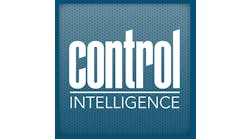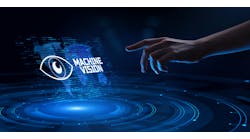Technology partnership introduces automation-as-a-service to improve vision-system analytics
Denali Advanced Integration’s services include automation-as-a-service (AaaS), powered by Amazon Web Services (AWS) machine-learning (ML) technology. In April, Denali and AWS signed a multi-year global strategic collaboration agreement to deploy automated solutions for quality inspection using ML-powered machine vision. Together, the two companies will focus on hardware, software and services, or a hybrid solution to fit a specific application need.
The offerings are focused on productivity uptime, accelerated time to value and real-time decision making, using the as-a-service business model, which can cater to budget-strapped facilities. It can help ease the upfront cost investment by offering subscription-based payments.
“We understand that investments in operational technology often require IT support with proper system integration to optimize the data transformation,” said Justin Long, vice president global automation at Denali.
Denali has been integrating technology for 31 years in many industries, such as discrete manufacturing and logistics. The Denali AaaS includes label validation, fulfillment operation, order pattern recognition, palletization and sorting—pick, pack and fill. Automation for quality inspection includes error, anomaly and damage detection, box dimensioning, identification for what is or is not in a container, order quality inspection and fill level monitoring. To automate the supply production side, hands-free scanning, storage density analysis, goods delivery, pallet moving and loading/unloading are available.
The subscription service offering is flexible. Some might need all new equipment, and some might be incorporating legacy equipment into the system. Automation-as-a-service can be an operational expense (OpEx) as a monthly or quarterly subscription, a capital expense (CapEx) as milestone payments or hybrid as a combination of the two. The decision of which commercial model to use can be determined based on customer budgets and business preference to optimize return on investment (ROI) based on consumption, Long said.
AWS helps Denali connect all the automation pieces with machine learning. “Machine-learning services are just one component in the multi-layered matrix of hardware and software required to automate quality inspection in industrial environments,” said Wendy Bauer, general manager of automotive and manufacturing at AWS.
Denali’s automation-as-a-service includes different levels of automation to match a production facility’s level of convergence with information technology (IT) and operational technology (OT), providing design, engineering and integration for software and hardware to assess where facilities are on the automation journey with the ability to scale.
“Our enterprise application development can provide customers with tailored dashboards that visualize data and analytics, capturing trends and enabling near real-time decision-making,” said Long, who also noted AaaS can provide centralized remote monitoring and lifecycle support for end-user-computing devices, robotics and edge computing.
“In this era of automation, we recognize the importance of equipping our customers with real-time decision-making power,” said Robert Vrij, CEO of Denali.
With Denali’s AaaS, AWS’ machine learning powers the real-time quality inspection. The AWS Lookout for Vision machine learning service is trained in the cloud and deployed on the edge, integrated with Denali’s edge compute technology.
The AWS automated inspection application uses a device-agnostic approach to computer vision, the company said. Whether using a 2D passive camera, a line scan camera, a laser displacement sensor or an existing image-based barcode reader to collect images or data, the machine-learning model is designed to drive real-time action by identifying, for example, visual defects in silicon wafers, unripe produce or dents and blemishes in car parts. Anomaly detection is achieved through training on a predefined set of object images, similar to any machine-vision system.





